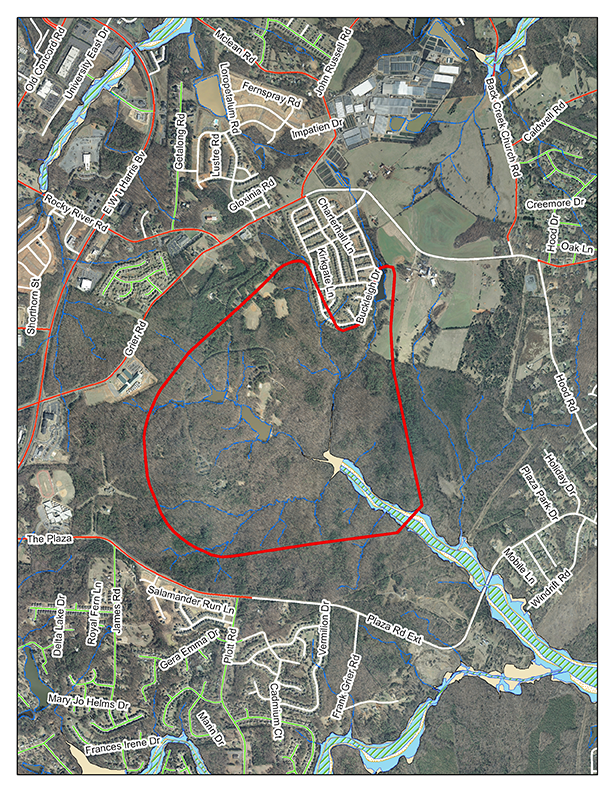
Survey Phase (2014)
During the survey phase, the streams were studied to learn about habitat and to measure erosion. Surveyors completed land surveys and scientists studied the streams.
Outreach Phase (2014)
During the outreach phase, the project team met with the public and stakeholders to introduce the project and answer questions. This phase continued throughout the project.
Design Phase (2014)
During the design phase, construction drawings for the project were developed. This involved designing the changes to the stream, laying out easements, and picking out plants. The design phase of this project continued through 2016.
Property Easement/Acquisition (2015)
The project team worked with Mecklenburg County Parks & Recreation and landowners to put land around the streams in conservation easements to protect the streams. Temporary construction easements were acquired to gain access to the streams. The conservation easement acquisition phase of the project continued through 2016.
Permitting Phase (2015)
During the permitting phase, the required permits were obtained from federal, state, and local government.
Construction Phase (2017 to 2019)
Monitoring (2019 to February 2024)
The completed project was monitored for five years after construction. During this time, scientists monitored vegetation and surface water quality.